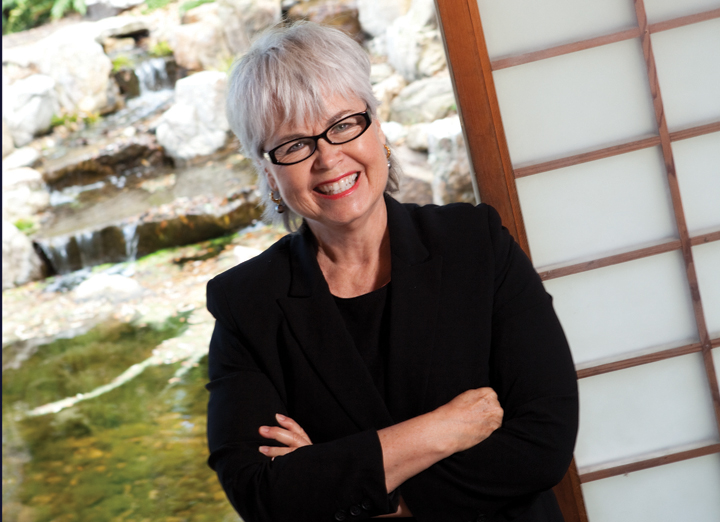Monday night found me down on 10th Street, sitting on a school lunchroom stool in the midst of Wilmington’s inner city. I was there to hear residents from the Williston neighborhood tell Grammy-nominated vocalist Nnenna Freelon what the school meant to them and to stir up students to interact with these alumni, to get their stories and pin them to a clothesline.
The night was a portion of Freelon’s two-week residency at the middle school with her daughter, visual artist Maya Freelon Asante. During the residency, mother and daughter worked with students on projects to commemorate the school’s 100-year anniversary. The projects with sixth and eighth graders were inspired by Freelon’s multi-media theatre production, showing on the UNCW campus Saturday night, “The Clothesline Muse.”
There is no doubt Freelon electrified the classrooms of the middle school each day, captivating the students with her energy, with her stories, her inspiration, even her impromptu singing. After she spoke briefly, she broke into song in the cafeteria; I too was enthralled.
Present that night were residents of the neighborhood, of the city. Even city manager Sterling Cheatham attended and Mayor Bill Saffo came for a while. Most though, were former Williston students going back through generations, come to share their stories of the school for the clothesline.
“The Clothesline Muse” tells the story of the clothesline in women’s history, particularly African-American women’s history. The clothesline contained a great deal of information, Freelon told the children and reminded those assembled of that generation. You could tell a lot about what was going on in a home from the clothes hung on the line: Who was home, who was absent. When special guests were expected for Sunday dinner was evident by what tablecloth was washed and drying. She linked news and gossip broadcast by the clothesline with the same news broadcast online today via social media.
Prior to desegregation, Williston Senior High was the only school black students could attend in New Hanover County.
Former math teacher Florence Warren, a current school volunteer, stood and spoke. Among her comments, Warren recited Williston’s alma mater, obviously unforgettable to the crowd: “We are Williston, Built on a Legacy of Greatness, Respecting ourselves and each other. We are still the greatest school under the sun.”
Soon the group of former students began sharing cherished memories of the sense of community created by teachers and administrators, of college-prep classes, practical job skill classes like electricity and home economics, and the life lessons they taught. At Williston the same teacher could have taught two or even three generations in one family.
Students had resilient support in the home, community and school. Teachers and principal became the students’ extended family, or in some cases, like parents.
One alumnus described walking to school from the surrounding neighborhoods including The Bottom — or from as far away as the north end and Taylor Homes, they walked.
When there was a fire, new desks were ordered, but the order was rerouted to a white-only school and Williston received that school’s used desks. They learned from hand-me-down textbooks. The classrooms were not air conditioned; on seasonal 90-degree days, the windows were opened, but class was not called off.
Flavoring it all was the respect students had for their institution, evident still in their memories of crossing the bridge from the middle to the high school, and entering the school from the front door — a privilege reserved for seniors.
Particularly poignant was one woman whose mother pushed the memorization of Chaucer’s “Canterbury Tales,” which was a requirement of graduation.
As she began:
“WHAN that Aprille with his shoures soote 1
The droghte 2 of Marche hath perced to the roote,
And bathed every veyne in swich 3 licour,
Of which vertu engendred is the flour;”
The recitation of the Old English verse created a rush of emotion in the room, her former schoolmates joined her in unison, including Dr. Lee Monroe.
Monroe left Williston to earn multiple advanced degrees from Virginia Polytechnic Institute and the University of Cincinnati and a bachelor’s degree in elementary education from Shaw University. His post-graduate career in academia includes Florida Memorial College (now Florida Memorial University), where he spent two years as president, and Paul Quinn College, where he spent nine years as president. Most recently he served as Chair of Colleges and Universities of the Anglican Communion.
He shared that all of the school’s faculty, when he was a student, were professors. Unable to attend college in North Carolina because of their skin color, they went to other states and came to teach high school with master’s degrees.
Ms. Margaret Anderson, 91 years old, was introduced. She too was part of the residency sharing the story of her experiences in a one-room school house to the students of Ms. Jordan’s sixth grade language arts class. Jordan said her students were wide-eyed at the idea of one room, heated with a wood burning stove.
As the sharing portion of the evening wound down, sixth grade students adopted elders and began to interview them one-on-one, a process Freelon introduced to them during her residency.
Williston is an institution that plans to celebrate its centennial in July. Its middle and high school are beloved by all who attended down through the generations.
Williston School is in many ways the center, or heart, of the city of Wilmington.
To understand Wilmington, one must understand the history of Williston. Freelon said if she could, she’d string a clothesline from the school all the way to city hall.




